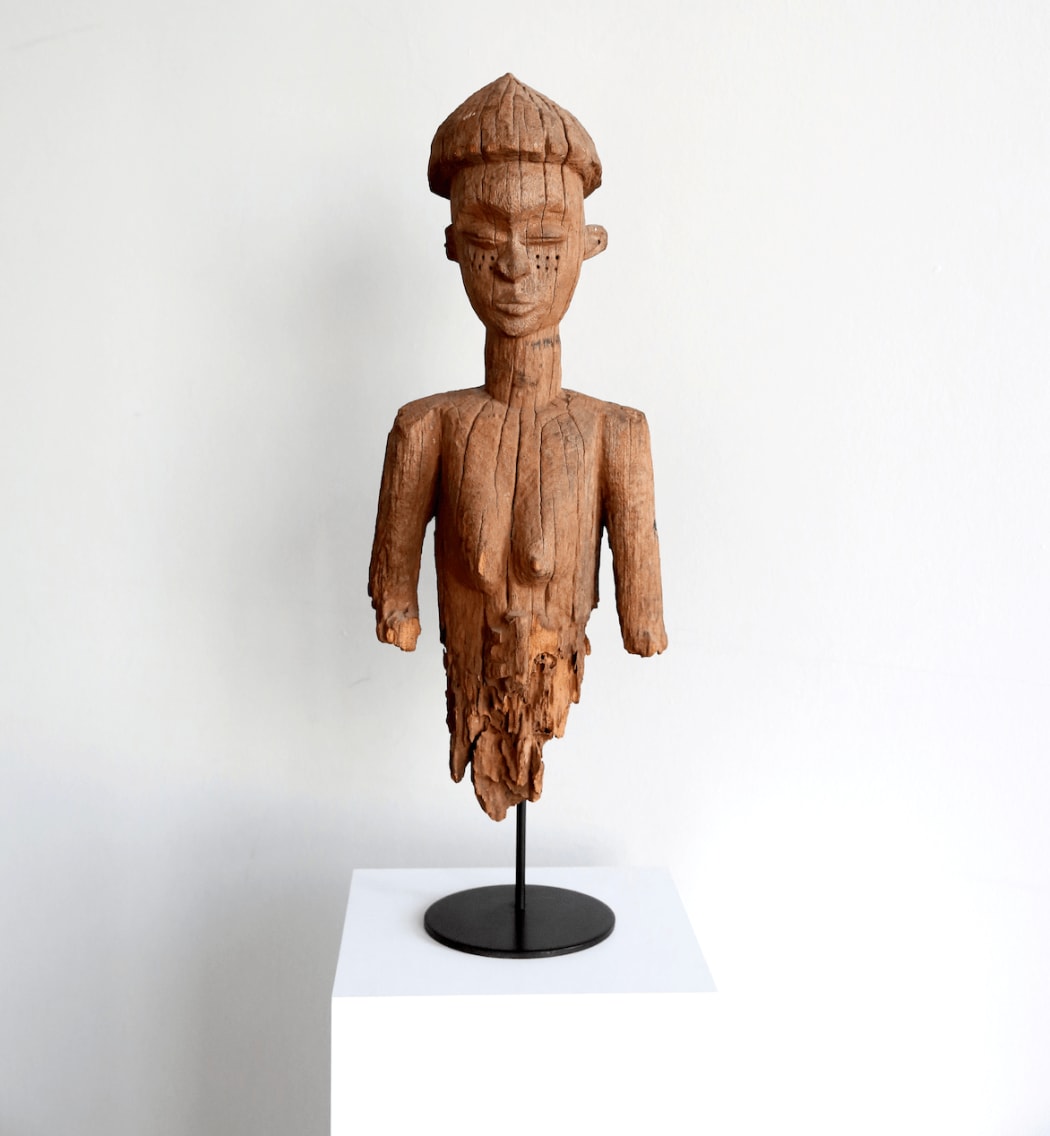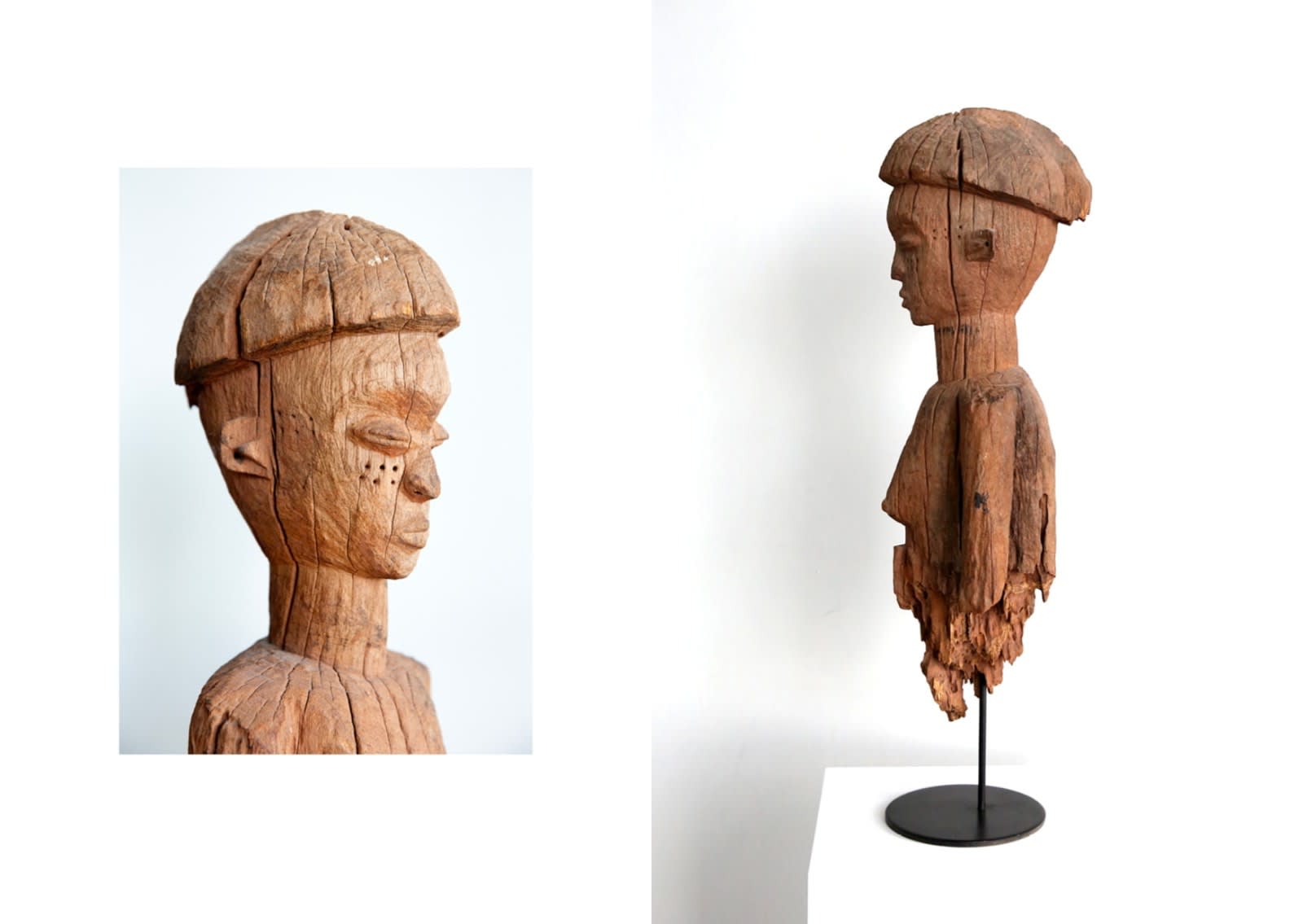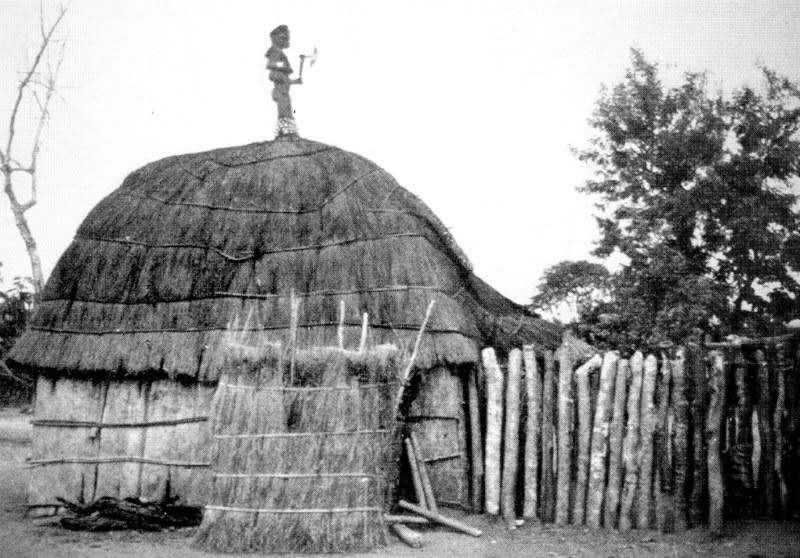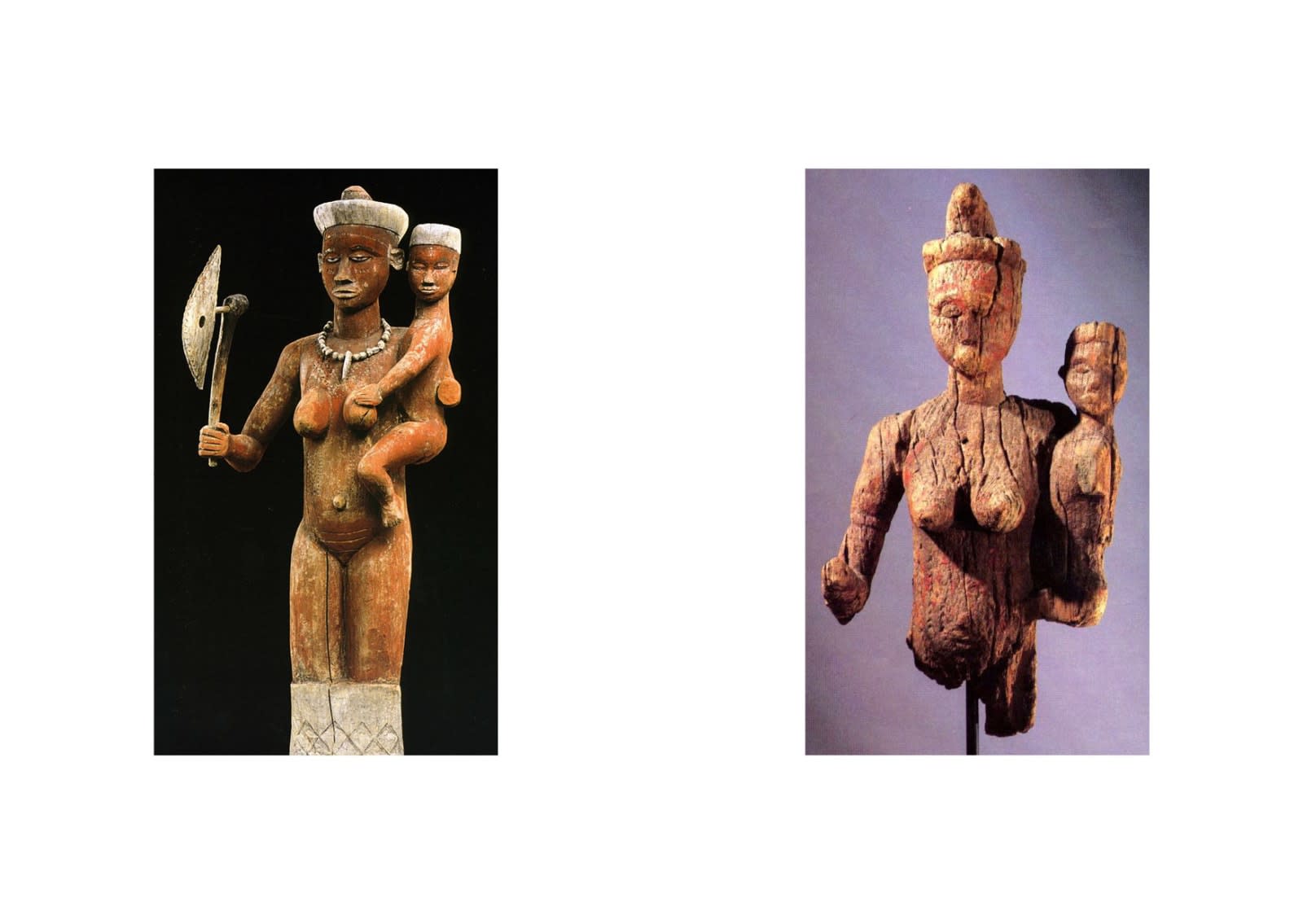
One of the highlights of the exhibition “Manifestations”, presenting five antique African masterpieces, is this beautiful Pende bust we recently discovered in a private Belgian collection. Never published or exhibited before, we’re proud to tell you a bit more about it in this post.

This female bust, once a full free-standing female statue, once graced the roof top of the chef’s abode among the Eastern Pende. The house’s central pole would support such a rooftop figure. The statue’s head is crowned by the typical helmet-like Pende coiffure. Pierced row of holes under her slit eyes and on the temples mirror local scarification traditions. The figure’s left hand was positioned on the torso, where remnants of the fingers tips still remain. The right lower arm must once have projected forward, holding an axe in the hand – as can be observed on other surviving Pende statues. The presence of such a weapon originally served as a warning to anyone of evil intent. Visible on the roof-top seen the size and elevated position, such a figure identified the hut as the chief’s abode.

The “kibulu” (ritual house) of Chief Komba ornamented with a rooftop finial sculpted by Kaseya Tambwe, photographed by Carlo Lamote, ca. 1947 (published in: Strother (Zoë S.), “Pende”, Milan, 5 Continents, 2008:33, fig. 6).
Known as “kishikishi”, the statue announced a chief’s sacred domain and his training in sorcery, skills enabling him to lead and protect his people. The figure’s purpose was to announce the presence of secret powers within the chief’s residence, while at the same time deterring any would-be malefactors from the sacred space. The axe-wielding female guarded the secrets of chiefly power contained within this structure, which also served as the chief’s residence. The statue represents a chief’s first wife, who had several ritual duties regarding agriculture, and was a political force (dancing with an axe at the chief’s investiture), as well as was a spiritual emblem of the Pende community.

The traditional Pende hairstyle; the general shape is a bowl with hair braided into small coils often coated with palm oil. Photographed by Henri Nicolai in Nioka Kakese (Central Pende) in 1955 (published in Nicolai (Henri), “Le Kwilu. Etude geographique d’une region congolaise”, Bruxelles, 1963).

Two Pende women with the typical hairstyle, photographed by Henri Nicolai, ca. 1955. Source. Nicolai (Henri), "Le Kwilu. Etude geographique d'une region congolaise",CEMUBAC, Bruxelles, 1963.

The ritual house of Chief Kombo-Kiboto in the Eastern Pende village of Ndjindji, photograhphed by Leon de Sousberghe in 1952 (published in: de Sousberghe (Léon), “L’art Pende”, Bruxelles: Académie Royale de Belgique, Beaux-Arts, t. IX, fasc. 2, 1958: fig. 218).
Position on the roof top, such figures were subject to the harsh climatic conditions. Originally painted red, rain and wind would erode the statue’s surface over the years. Additionally, this wooden figure has suffered major deterioration, likely caused once the chief’s abode collapsed after it became disused after his passing. It should be noted that the Pende deliberately avoid creating such statues out of permanent materials, such as stone or metal, there was not intention to make such powerful objects eternal, as each new chief had to commission his own figures, and people would be fearful to keep too many spirits around. The meditative gaze and eroded surface give this bust a timeless and universal appeal, while it continues to impress new onlookers.

Left: Collection Royal Museum for Central Africa,Tervuren, Belgium (inv. #EO 1950.25.1). Right: Private Collection (Sotheby’s, New York, 1 December 1983, lot 24).